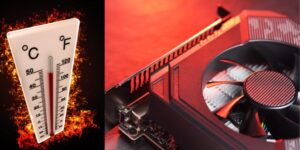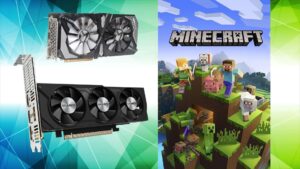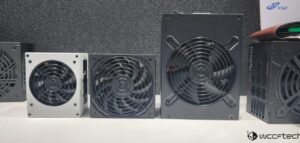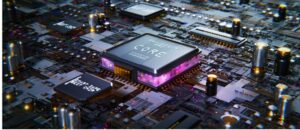How Long Do PC Power Supplies Last?
PC power supplies are often the unsung heroes of our systems. They quietly do their job, providing the electricity necessary to run our computers, while we focus on the more glamorous components like processors, graphics cards, and storage devices. Yet, power supplies play a critical role in the overall reliability and longevity of a PC. Understanding how long these components typically last and what factors impact their lifespan is crucial for maintaining a healthy and dependable computer system. In this article, we will delve into the world of PC power supplies, exploring their lifespan, the factors that influence it, and tips to extend their longevity. From capacitors to electrical stress, we’ll unravel the mysteries surrounding these integral components that ensure our computers function seamlessly.
The Anatomy of a PC Power Supply:
Before we dive into the lifespan of PC power supplies, it’s essential to understand their fundamental components and how they operate. A typical PC power supply comprises the following parts:
Transformers and rectifiers:
- These components convert the alternating current (AC) from your wall outlet into direct current (DC) suitable for your computer’s components.
Capacitors:
- Power supplies contain electrolytic capacitors, which store electrical energy and help smooth out voltage fluctuations.
Voltage regulators:
- These circuits maintain a consistent voltage output to power your PC’s components.
Cooling system:
- Power supplies include fans and heatsinks to dissipate heat generated during operation.
Connectors:
- Various connectors provide power to your motherboard, graphics card, hard drives, and other components.
Average Lifespan of PC Power Supplies
The lifespan of a PC power supply depends on several factors, and there is no one-size-fits-all answer. However, on average, a quality power supply can last between 5 to 10 years or even longer. Some enthusiasts and professionals report using the same power supply for over a decade without issues. It’s important to note that not all power supplies are created equal. Higher-quality units from reputable manufacturers typically have longer lifespans due to better components and build quality. On the other hand, budget or generic power supplies may fail sooner.
Factors Influencing PC Power Supply Lifespan
Several factors can significantly influence the lifespan of a PC power supply:
1. Quality of Components:
As mentioned earlier, the quality of components used in a power supply plays a significant role in its lifespan. Higher-quality capacitors and other parts tend to last longer and offer better performance.
2. Load and Efficiency:
Running a power supply near its maximum rated load for prolonged periods can decrease its lifespan. Power supplies are most efficient and generate less heat when operating at around 50-60% of their maximum load.
3. Operating Environment:
The temperature and humidity in which a power supply operates can impact its longevity. Power supplies in hot and dusty environments may wear out faster due to increased heat and the accumulation of dust on internal components.
4. Electrical Stress:
Voltage spikes, power surges, and unstable electricity from the grid can lead to power supply failures. Using surge protectors and uninterruptible power supplies (UPS) can help mitigate these risks.
5. Usage Patterns:
How frequently a computer is turned on and off can also affect a power supply’s lifespan. Frequent power cycling can put additional stress on the components.
6. Brand and Model:
As mentioned earlier, the brand and model of a power supply matter. Well-known manufacturers with good reputations tend to produce more reliable power supplies.
Signs of a Failing Power Supply:
A failing power supply unit (PSU) can cause serious stability issues in a PC, leading to crashes, hardware damage, or complete system failure. Here are the key warning signs that indicate your PSU might be going bad:
1. Unstable System Performance:
A PSU that is failing or unable to deliver stable power can cause random crashes, shutdowns, or restarts. These issues often occur under load (e.g., gaming, video editing, or running demanding applications).
Symptoms:
- PC randomly shuts down or restarts without warning.
- Freezing or BSOD (Blue Screen of Death) errors.
- Failure to boot up consistently.
2. Unusual Noises:
A PSU should run quietly, with only a slight hum from the fan. If you start hearing buzzing, clicking, or electrical whining noises, the internal components (such as capacitors or transformers) may be failing.
Symptoms:
- Coil whine – A high-pitched buzzing sound, usually under load.
- Clicking or ticking noises – Could indicate a failing fan or loose internal parts.
- Loud or irregular fan noises – Sign of overheating or a damaged fan.
3. Burning Smell or Smoke:
If you notice a burning smell coming from your PC or PSU, turn it off immediately and unplug it. This could indicate overheating, short circuits, or internal component failure, all of which pose a fire risk.
Symptoms:
- A strong burning plastic or electrical smell.
- Smoke or sparks coming from the PSU.
- PSU overheating even under low loads.
4. Inconsistent Power Delivery:
A failing PSU may struggle to provide stable voltage, leading to inconsistent behaviour. This can affect connected peripherals and components.
Symptoms:
- PC sometimes doesn’t turn on when pressing the power button.
- External devices (USB, external drives) disconnect randomly.
- System randomly loses power or fails to wake from sleep mode.
5. Visible Damage or Leaking Capacitors:
Physical damage is a major red flag. If you open your PC and inspect the PSU, look for bulging or leaking capacitors, scorch marks, or signs of corrosion.
Symptoms:
- Bulging, cracked, or leaking capacitors.
- Dust buildup clogging vents, causing overheating.
- Loose or melted power connectors.
6. PSU Fails the Paperclip Test:
The paperclip test is a quick way to check if your PSU is completely dead. You short the green wire and any black wire on the 24-pin motherboard connector with a paperclip and see if the PSU fan starts spinning.
Results:
- Fan spins: PSU might still work, but this doesn’t guarantee stability.
- Fan doesn’t spin: PSU is dead and needs replacement.
Extending the Lifespan of Your Power Supply
While various factors influence the lifespan of a power supply, there are steps you can take to maximize its longevity:
Choose a High-Quality Power Supply:
- Invest in a reputable, high-quality power supply from a well-known manufacturer. Spending a bit more initially can save you money and frustration in the long run.
Maintain Proper Ventilation:
- Ensure your computer case has good airflow, and keep it free from dust and debris. Overheating can shorten a power supply’s life.
Use a Surge Protector or UPS:
- Protect your PC from electrical surges and unstable power by using surge protectors or uninterruptible power supplies. These devices can safeguard your power supply and other components.
Avoid Overloading:
- Don’t push your power supply to its limits. A power supply operating within a reasonable load range is likely to last longer.
Power Off Properly:
- When shutting down your computer, use the proper shutdown procedure rather than cutting power abruptly.
Regularly Inspect and Clean:
- Periodically check your power supply for dust and debris accumulation. Gently clean it with compressed air if necessary.
Monitor Voltage:
- Software tools like HWMonitor or BIOS settings can help monitor voltage levels to ensure they are within safe ranges.
Be Cautious with DIY Repairs:
- If you suspect your power supply is failing, it’s best to consult with a professional or consider a replacement. DIY repairs can cause more harm than good.
When to Replace a Power Supply
A power supply unit (PSU) is one of the most critical components in a PC, as it provides stable and clean power to all other parts. If a PSU starts failing, it can cause system instability or even damage components like the motherboard, GPU, or storage drives. Here are the key indicators that it’s time to replace your PSU:
1. Age of the PSU (5+ Years Old)
Most high-quality PSUs last between 5 to 10 years, but after 5 years, performance degradation begins. Capacitors age over time, leading to voltage fluctuations and reduced efficiency.
When to replace:
- If your PSU is 5+ years old and has been used heavily (e.g., gaming, workstation, or cryptocurrency mining).
- If your PSU lacks modern safety features found in newer models.
- If your system has random crashes or shutdowns without any other identifiable cause.
🔹 High-end PSUs (e.g., Seasonic, Corsair RMx, EVGA SuperNOVA) can last longer but should still be tested periodically.
2. System Instability & Power Issues:
A failing PSU often leads to random reboots, freezing, or power failures, especially when the system is under load.
Signs to watch for:
- PC randomly shuts down or restarts, even when not overheating.
- Inconsistent power delivery (USB devices randomly disconnecting, peripherals acting erratic).
- The system fails to boot up or requires multiple attempts.
- Blue Screen of Death (BSOD) errors related to power management.
🔹 If these symptoms persist and troubleshooting other components (RAM, motherboard, etc.) doesn’t solve them, the PSU is likely the culprit.
3. Upgrading to More Power-Hungry Hardware:
If you are upgrading your CPU or GPU, your current PSU may not provide enough wattage, causing instability.
When to upgrade:
- If you install a high-end GPU (e.g., NVIDIA RTX 4080/4090 or AMD Radeon RX 7900 XTX) and your PSU doesn’t meet the power requirements.
- If you plan to overclock your CPU/GPU, which increases power draw.
- If you’re adding multiple storage drives, RGB lighting, or liquid cooling, requiring more power.
🔹 Solution: Before upgrading components, check the wattage recommendation of your new hardware and compare it with your PSU’s rated capacity. Use a PSU wattage calculator to ensure you have enough power.
4. Overheating & Fan Issues:
A PSU should operate within a safe temperature range. If it starts overheating, its efficiency drops, and it may shut down to prevent damage.
Signs your PSU is overheating:
- The PSU fan runs loudly all the time or doesn’t spin at all.
- Your PC shuts down or throttles performance under load.
- The PSU case feels extremely hot to the touch.
🔹 Solution: If cleaning the PSU and ensuring proper ventilation doesn’t fix the issue, it’s time for a replacement.
5. Electrical Noises (Buzzing, Clicking, or Coil Whine)
A PSU should run quietly. If you start hearing buzzing, clicking, or coil whine, it may indicate failing capacitors, loose components, or electrical instability.
When to replace:
- If the noise is persistent and gets worse over time.
- If it’s accompanied by system instability or crashes.
- If you notice sparks, smoke, or a burning smell, turn off your PC immediately!
🔹 Solution: Don’t ignore unusual PSU noises. Electrical failures in a PSU can cause serious damage to other components or even a fire hazard.
6. Visible Damage or Power Surges:
Physical damage to the PSU or exposure to power surges can shorten its lifespan or cause sudden failure.
Signs of physical damage:
- Burn marks or melted cables inside the PSU or on the motherboard.
- Bulging or leaking capacitors when inspecting the PSU.
- Damage from a power surge, lightning strike, or electrical outage.
🔹 Solution: If your PSU has suffered a power surge, don’t risk using it. Get a new PSU and a high-quality surge protector or an uninterruptible power supply (UPS).
7. Failing the Paperclip Test or Power Supply Tester:
If your PC doesn’t turn on, you can perform a paperclip test or use a PSU tester to check if the unit is still functioning.
How to do the Paperclip Test:
- Unplug the PSU from the PC but keep it connected to power.
- Locate the 24-pin motherboard connector.
- Use a paperclip to connect the green wire (PS_ON) to any black wire (ground).
- Turn on the PSU switch.
- If the PSU fan doesn’t spin, it’s dead and needs replacement.
🔹 Caution: Even if the fan spins, it doesn’t guarantee the PSU is fully functional—use a PSU tester for more accurate results.
Conclusion
A power supply unit (PSU) is a crucial component that ensures stable power delivery to your PC. While high-quality PSUs can last up to 10 years, most should be replaced after 5 years, especially if used under heavy loads. Signs of a failing PSU include random shutdowns, unusual noises, overheating, or electrical smells. Ignoring these warnings can lead to system instability and potential damage to other components.
If you’re upgrading to a high-end GPU or CPU, ensure your PSU meets the power requirements. Additionally, power surges, overheating, and capacitor ageing can shorten a PSU’s lifespan, making proactive replacement essential. To maintain a reliable system, invest in a high-quality PSU from a reputable brand, use a surge protector or UPS, and ensure proper ventilation. Replacing a PSU before it fails can prevent hardware damage and costly repairs, ensuring a stable and efficient PC for years.
FAQs
Q. How long do PC power supplies last?
Typically 5-10 years, but varies with quality and usage.
Q. What affects a power supply’s lifespan?
Quality, load, and environmental conditions impact its longevity.
Q. Can power supply failures be predicted?
Warning signs like unusual noises or power issues may indicate impending failure.
Q. Are maintenance tasks crucial for longevity?
Keeping the PC clean and well-ventilated helps extend the power supply’s life.
Q. Should I replace a working power supply preventatively?
Only replace if upgrading components or experiencing signs of wear or unreliability.
Last Updated on 30 January 2025 by Ansa Imran

Ansa Imran, a writer, excels in creating insightful content about technology and gaming. Her articles, known for their clarity and depth, help demystify complex tech topics for a broad audience. Ansa’s work showcases her passion for the latest tech trends and her ability to engage readers with informative, well-researched pieces.







